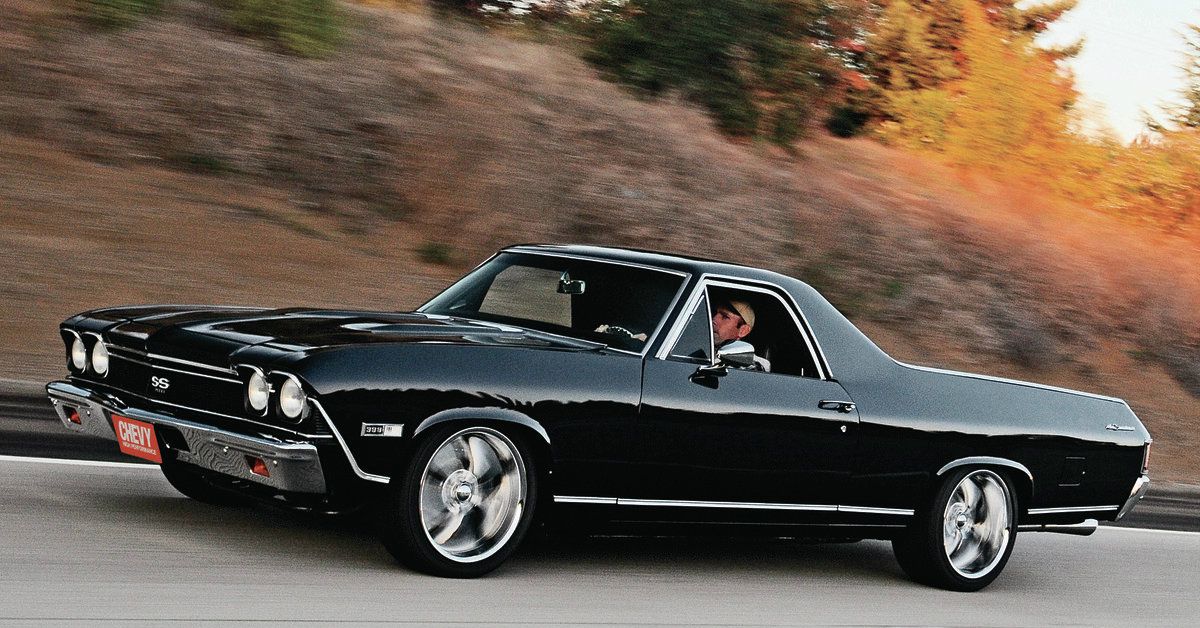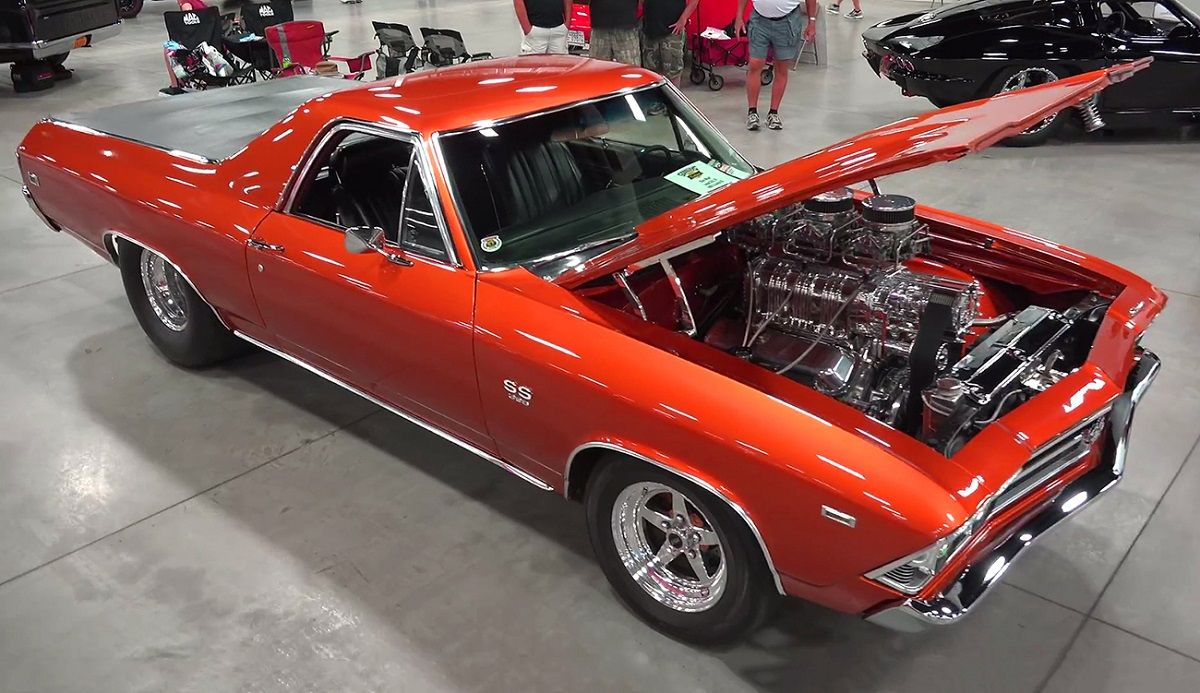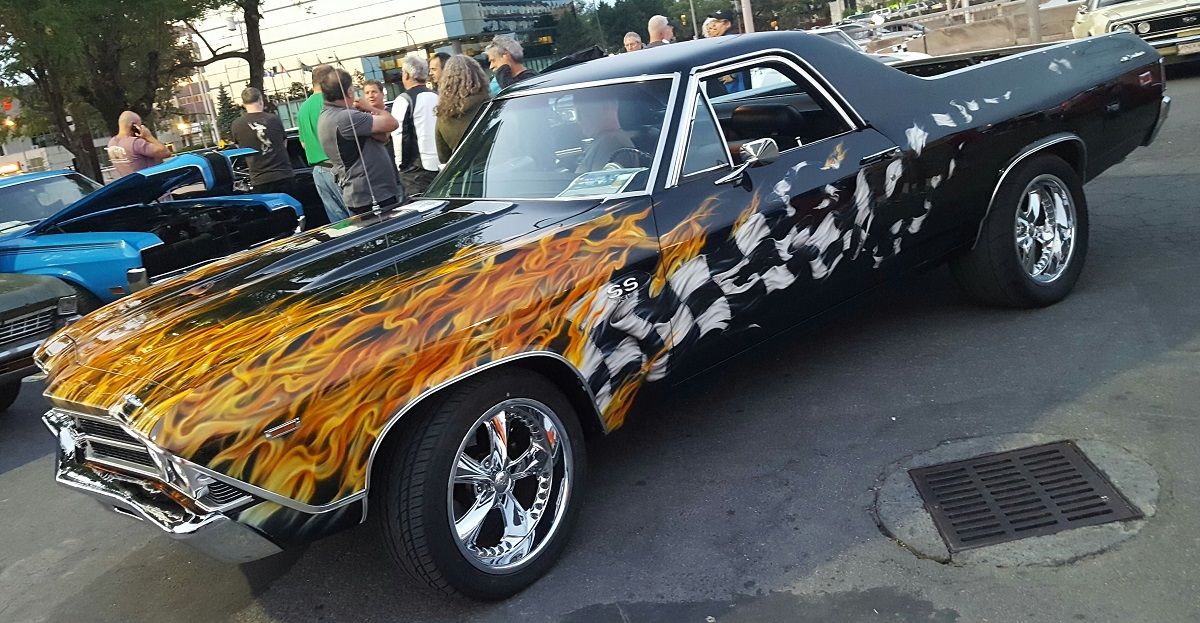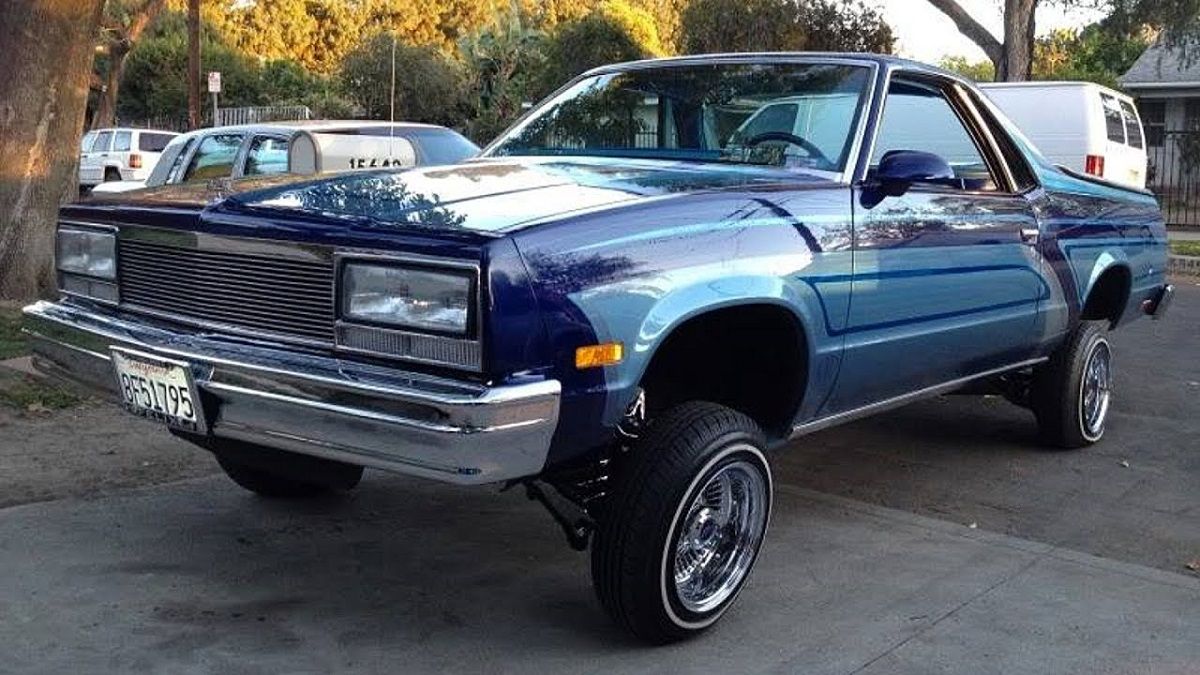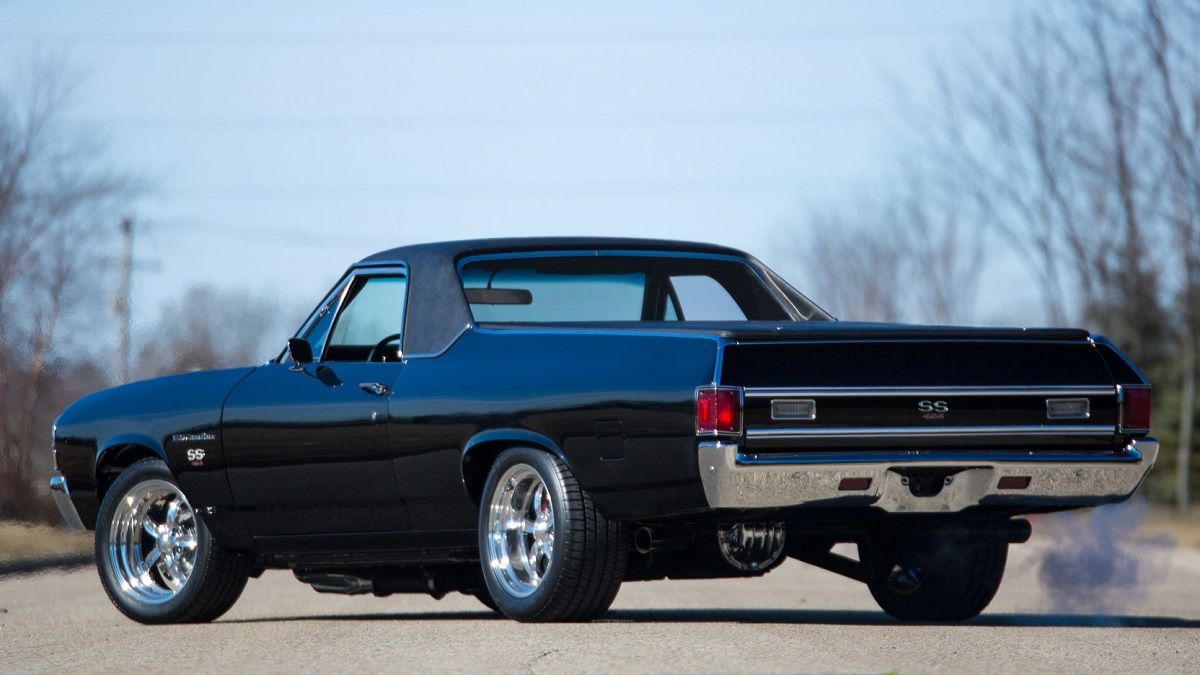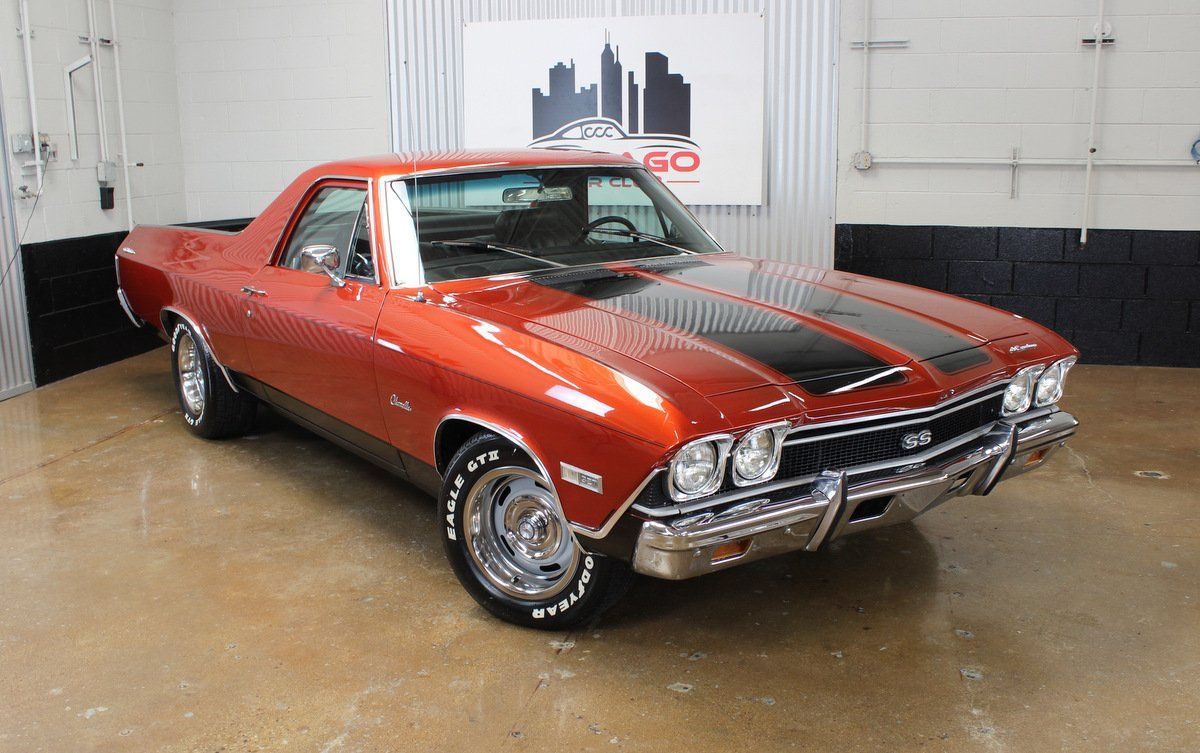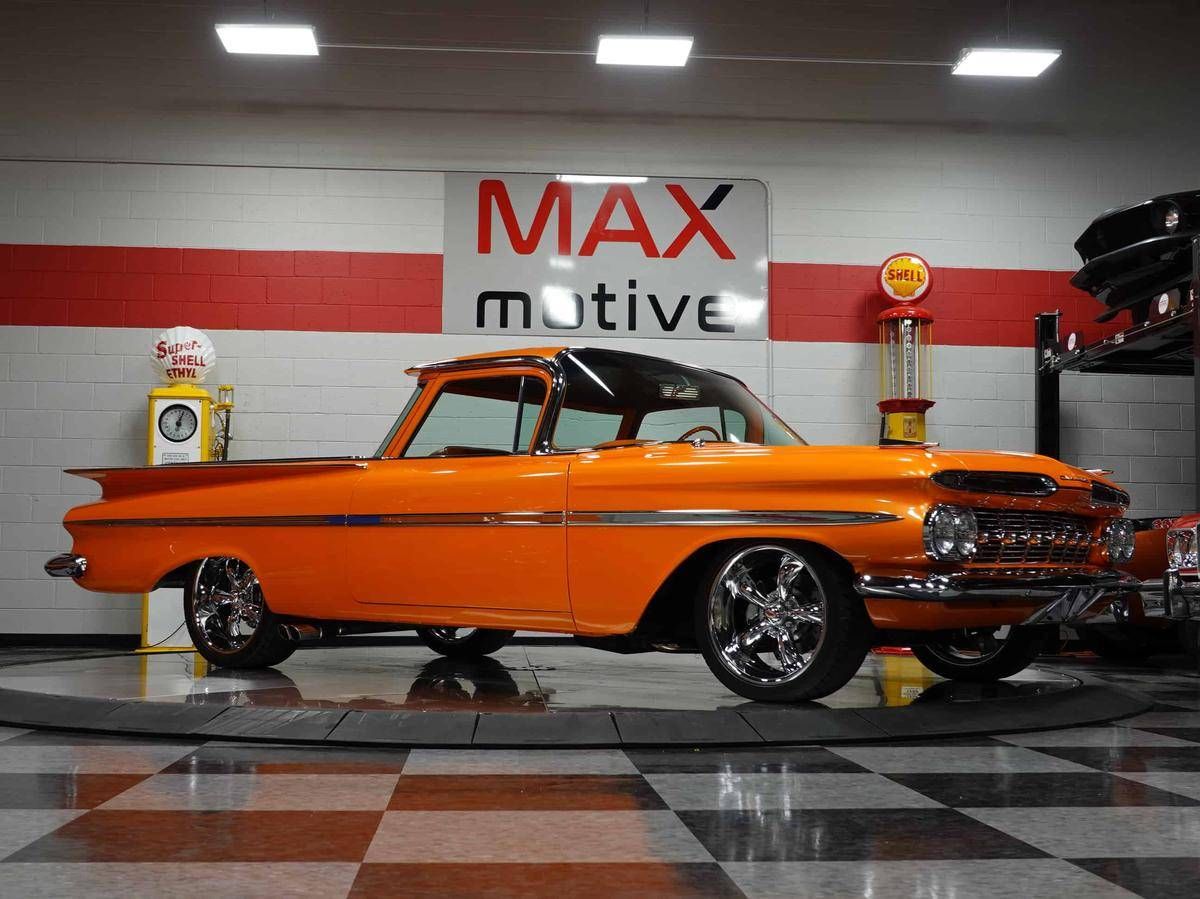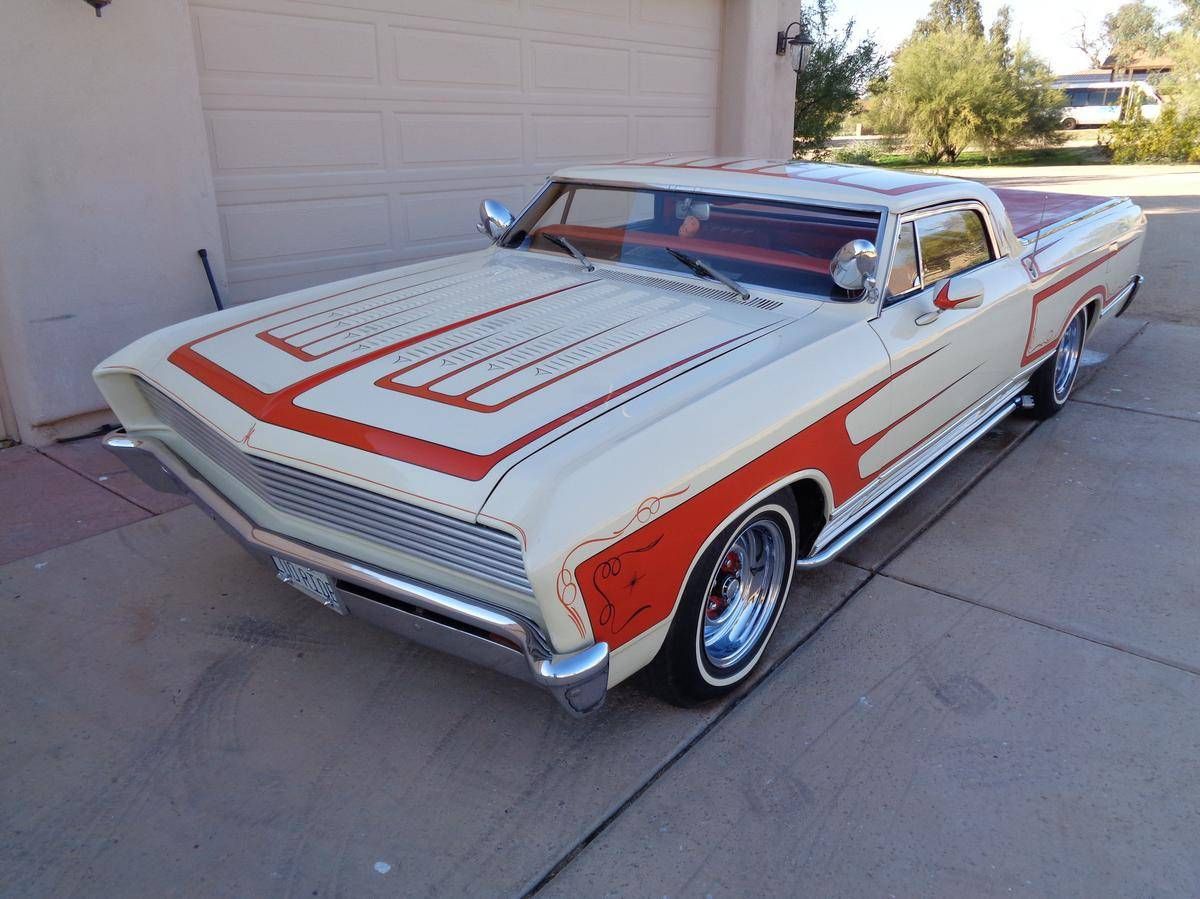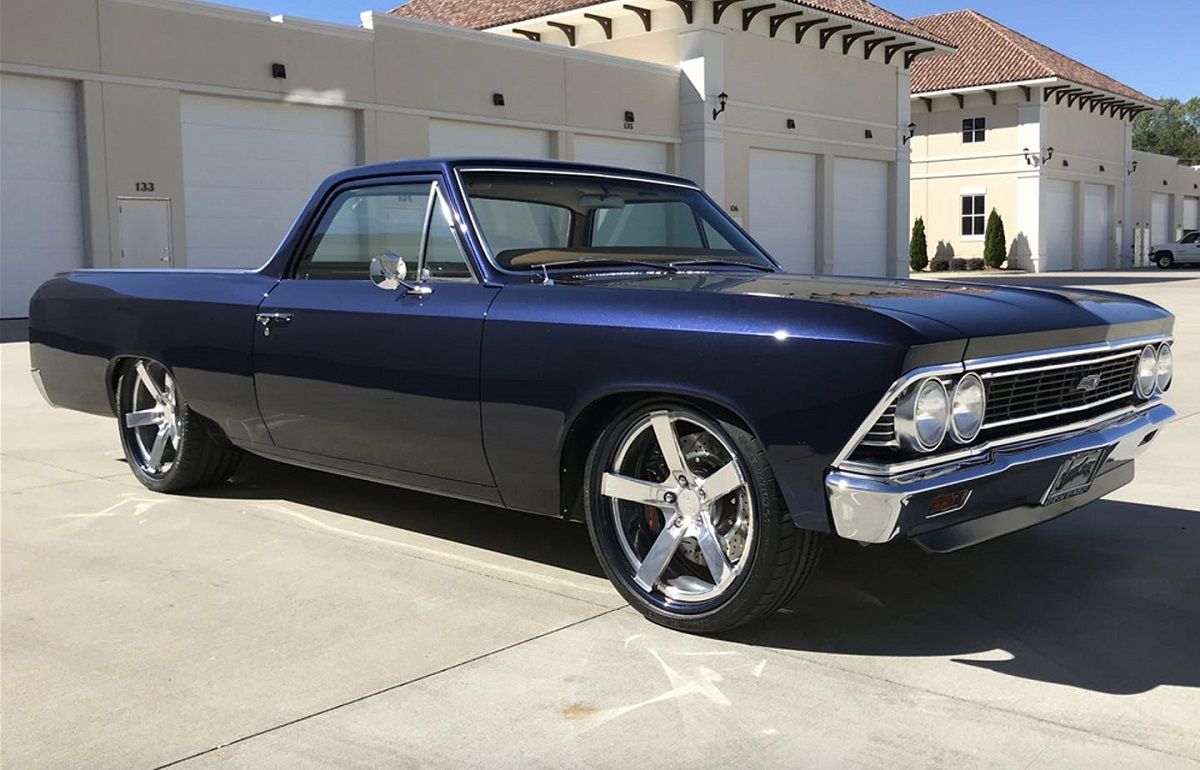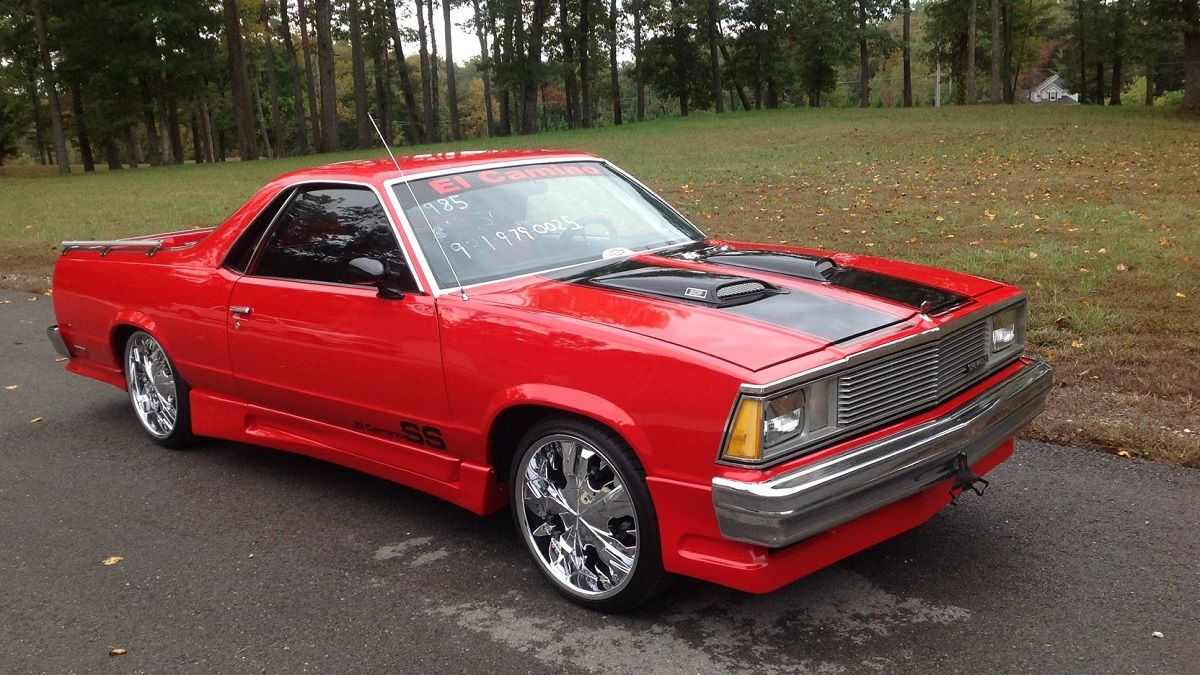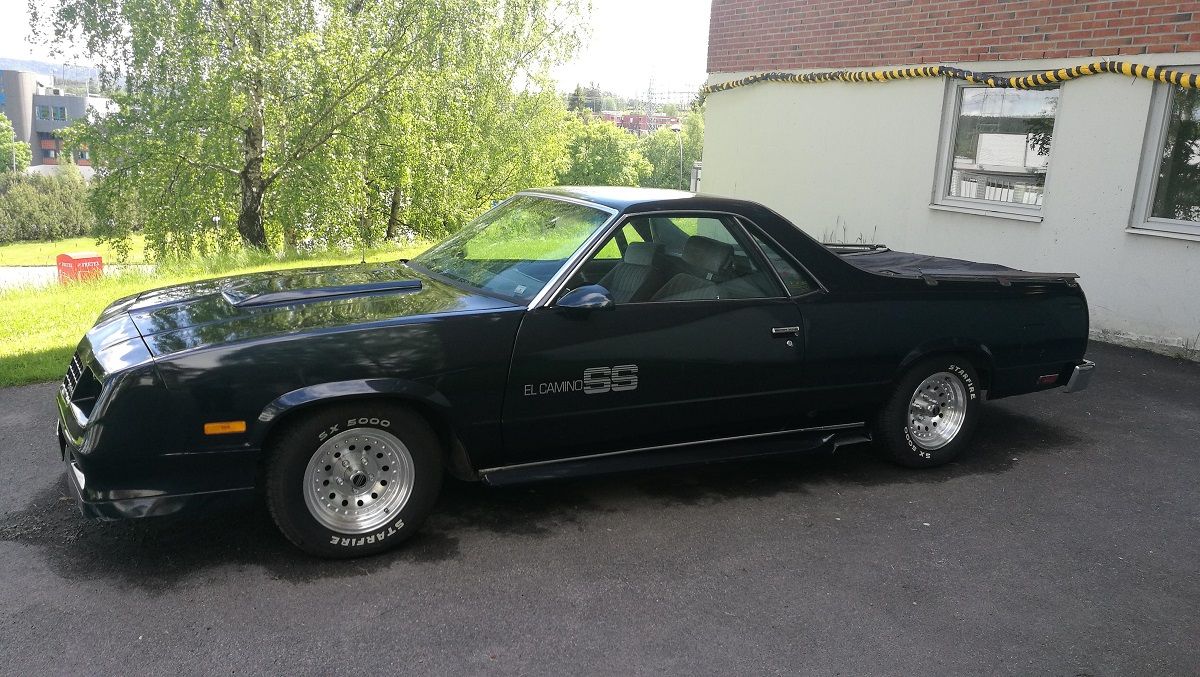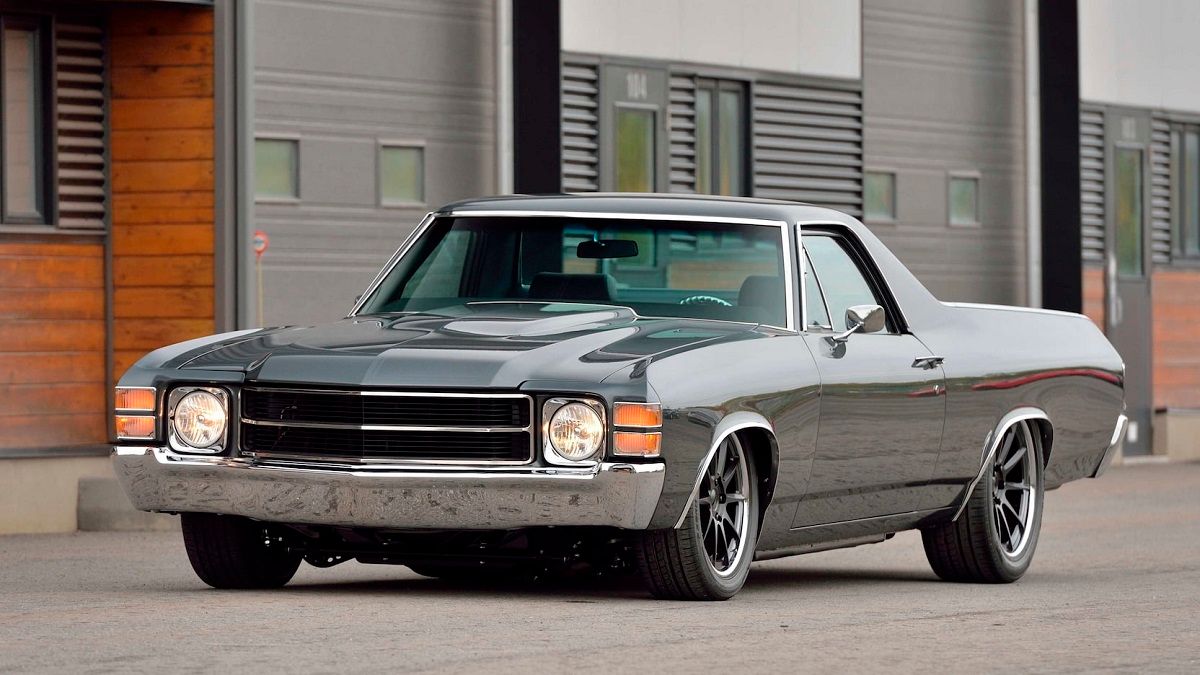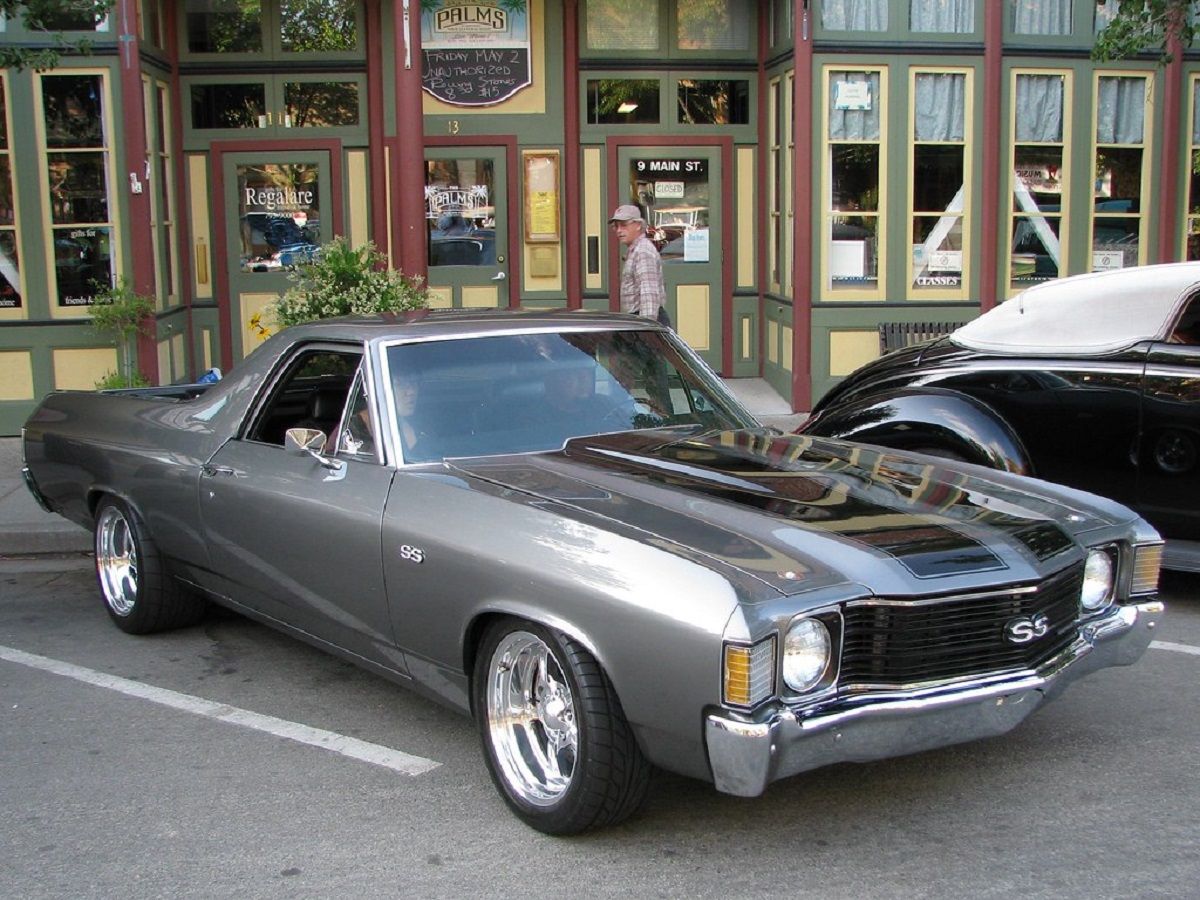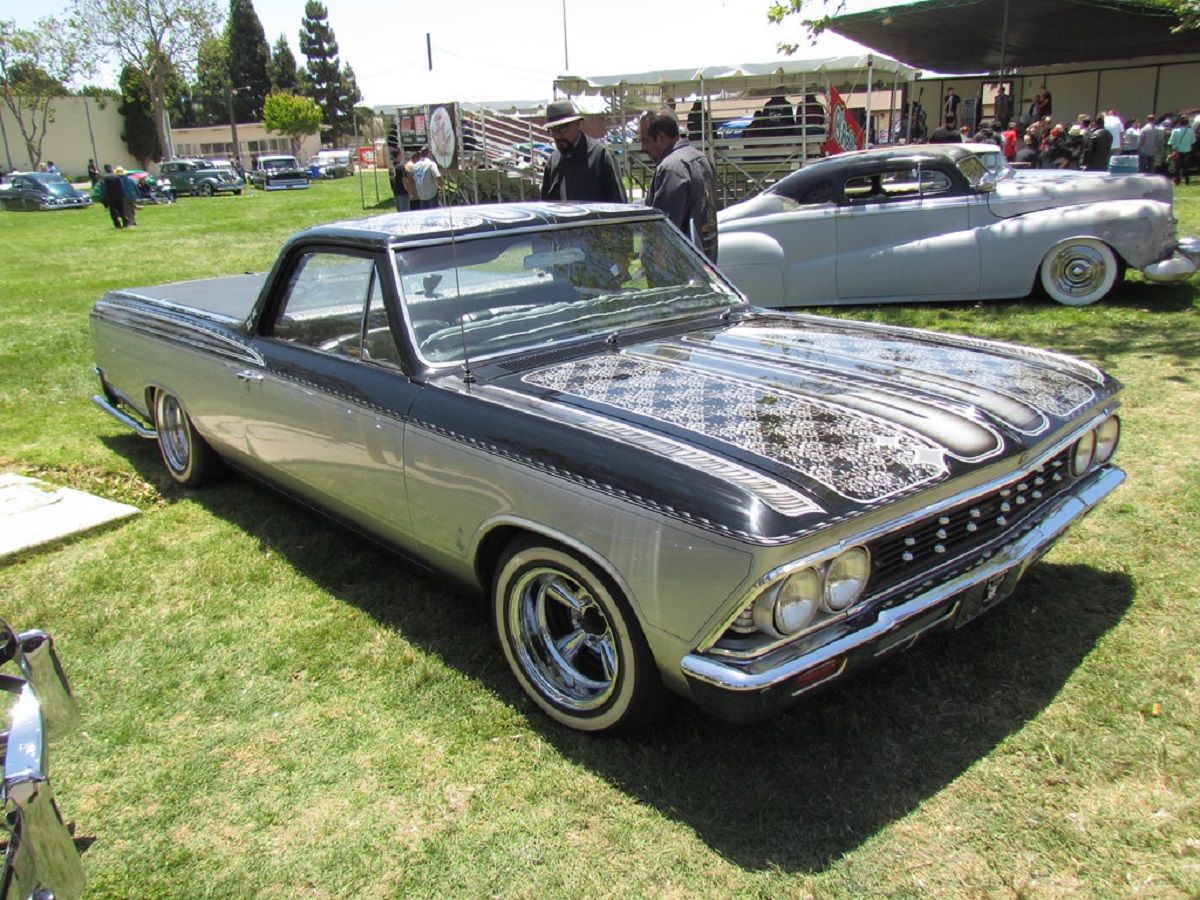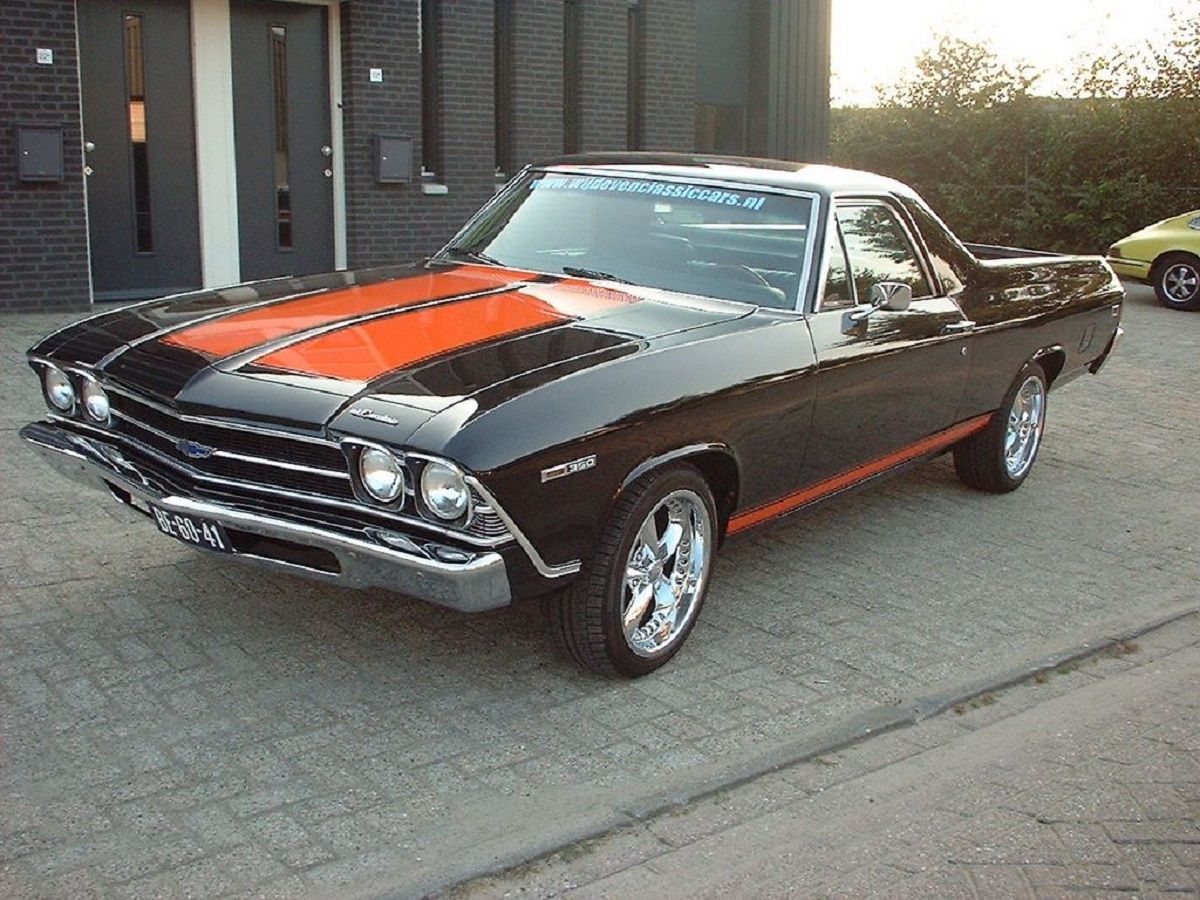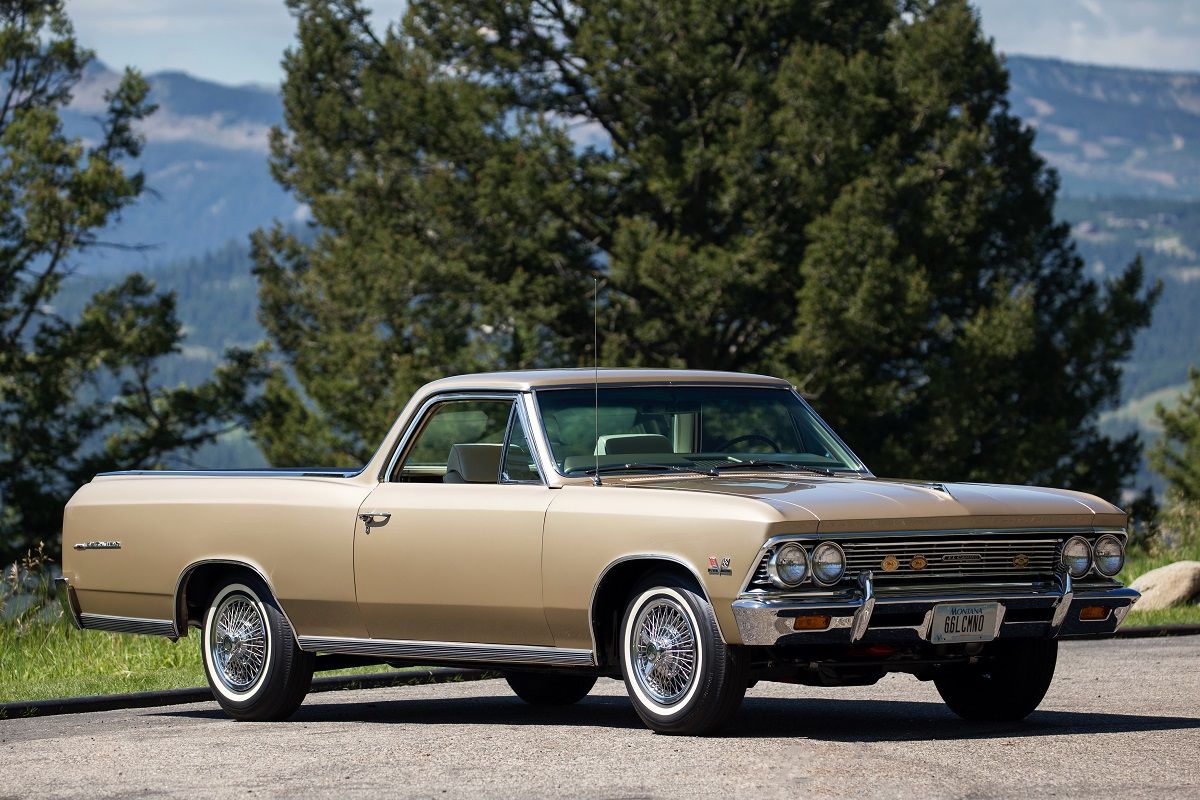In 1958, Chevrolet started to sell a car-pickup hybrid called the El Camino. Inspired by the Ranchero, which was the market leader, the El Camino combined the sedan-pickup truck built with the Impala body, cat-eye taillights and rear fins. Chevy said: "It rides and handles like a convertible, yet hauls and hustles like the workingest thing on wheels."
In the 50s, ute-type vehicles were not as popular in the US as in Europe or Australia. Even though the Ranchero was a hit, the first version of the El Camino was not very successful and Chevrolet discontinued it after 2 years.
In 1968, the El Camino came back with a powerful engine, which made it into one of the legendary muscle cars of the 70s. In 1987, Chevrolet dropped the El Camino from its lineup. Nowadays, the car is a classic. Here are 15 Stunning Photos Of Modified El Caminos.
15 Its Design Was Always Changing
The design of the El Camino changed every year. For the 1968 model year, the company released the SS model fitted with the 396 V-8 engine. In 1970, the car got a mighty 454 V-8 engine that delivered 450 hp and 600 lb.ft. of torque. The car survived through declining sales and the gas crisis.
14 Jesse Pinkman (Breaking Bad) Drove The El Camino
Breaking Bad TV show gave fans full closure with El Camino - the movie follow-up to antihero drama Breaking Bad. At the beginning of the movie, Jesse Pinkman is speeding away in a muscle car, which is the 1978 Chevrolet El Camino. Hopefully, the car could get him to something better.
13 A True Muscle Car
At the beginning, Chevrolet wanted to market the car as a light and affordable workhouse. The first El Camino was a Bel Air-inspired coupe. In the late '60s, it became a full-blown muscle car with a bed in the back. The car went through one of the biggest vehicle transformations during its life cycle.
12 Classic Chevelle DNA
The El Camino's exterior followed the Chevelle's footsteps. It got the same boxy body up until the A-pillar. In order to cut production costs, Chevrolet fitted the car with a standard 4-door Chevelle Malibu wheelbase but added a long rear overhang. A new exterior upgrade came up every year, which fueled everyone's interest.
11 The Sporty D88 Stripe Package
The most photographed version of the El Camino came with the D88 stripe package which gave it a sporty appearance. The package added two wide stripes with black outlines that stretched back to the windshield. The addition of functional hood pins was optional, just like the black center panel of the tailgate.
10 The Bulky Bumper And The Gimmicky Hood
The entire lower part of the front fascia was covered by the big bumper. The orange indicators sat below the headlines. Chevrolet added the gimmicky cowl induction hood in order to "shoot an extra breath of cool air into the engine air intake... like second wind to a distance runner".
9 Optional Black Vinyl Roof
One of the options was the black-colored vinyl roof. This might be not the best choice for those living in a sunny place, but these roofs were popular back then. El Camino tried to get as close to a perfect muscle car as possible. The bed was surrounded with chrome details: window frames and A-pillars.
8 Back-Up Lights Are In The Tailgate
At the back end, the back-up lights weren't in-unit with the wraparound taillights. They were moved to the tailgate. This was done mainly for the look, as the lights were useless unless you wanted to drive in reverse with the tailgate down. Chrome bars separated the center panel from the bodywork.
7 Chevelle-Inspired Interior
El Camino was made for the market where practicality and performance were highly valued. The interior had to support this idea. Many elements were taken from the Chevelle. You could see the same driver-focused center panel with the gauge unit and the instrument cluster. The passenger side only had one glove box.
6 Simple, But Sporty Style
Modern bucket seats are the ones you can find on race cars, they offer great support. In the past, they were just separate seats. They were layered with vinyl for extra comfort, though. The gear shifter stuck right out of the main console. The consol itself extended to the armrests between the seats.
5 The Fastest El Camino ZL1
Those who valued speed the most went for the El Camino ZL1. It got the most powerful 427 7.0L engine. It was the same unit found in the Corvette ZL1. Rated at 430 hp, it got aluminum heads sitting on a big iron block. A couple of tuned El Caminos could even reach 550 hp.
4 Four Transmission Options
The company offered 4 transmission options for the third-generation El Camino. Two of them were manuals: a 3- and 4-speed M22. Then there were 2 automatic transmissions known as the Turbo-Hydramatic and the Powerglide. They offered a different number of forward gears. All versions sent power to the back wheels.
3 Vintage And Classic, But Not Expensive
In the 70s, an El Camino stripped of optional features would cost you around $23,000 in modern money. Today, you can buy a running model for just $8,000. However, if you want a faster El Camino, then you should pay over $20,000. The good news is that Chevrolet dispatched plenty of them.
2 1,000,000 Units Sold
The El Camino has been an American classic due to its sporty styling and practicality that's hard to find in a muscle car. It was so popular that the company sold 1,000,000 units before ceasing production in 1987 with less than 500 1988 El Caminos built. Today, it's a collector's gem.
1 Re-Introduction Attempts Have Been Made
Even though the El Camino was very popular, it didn't make it viable for a re-introduction into the range. Still, Chevrolet made many such attempts in the 90s. The new El Camino was supposed to be based on the Caprice. However, the closest thing that came out of a production plant was the Chevrolet SSR.

